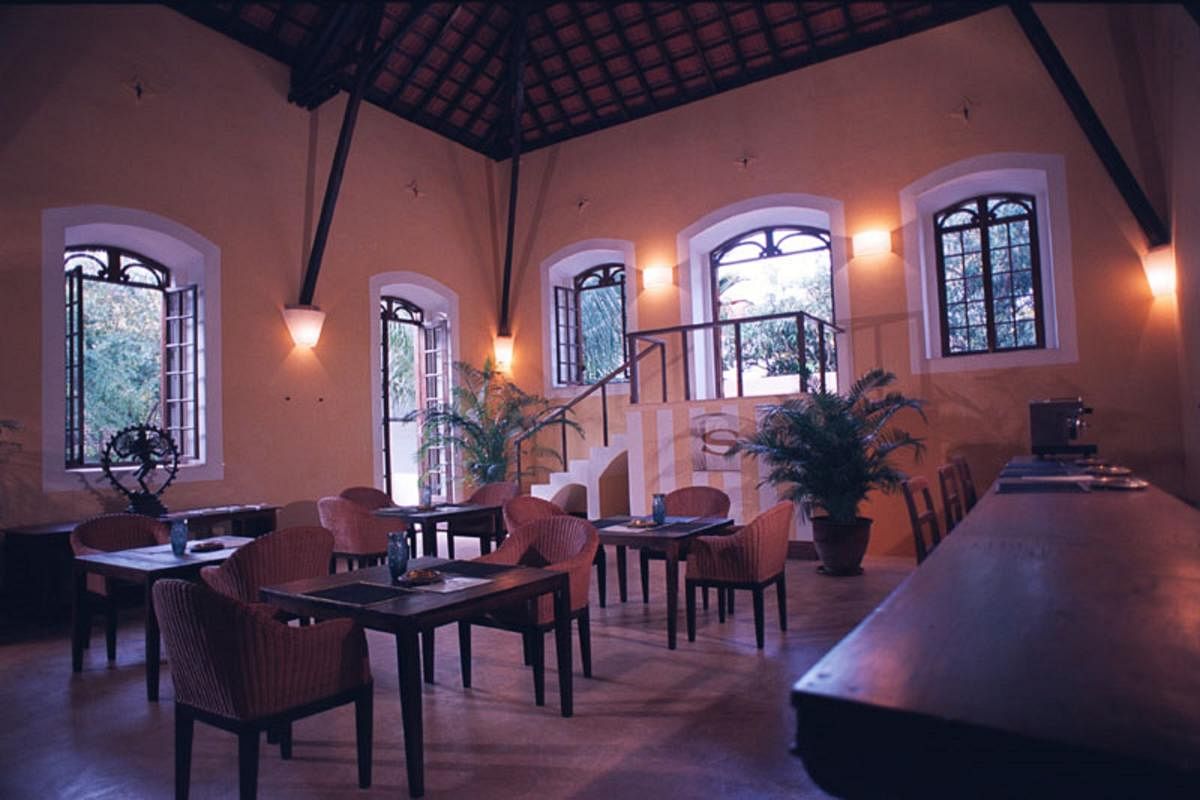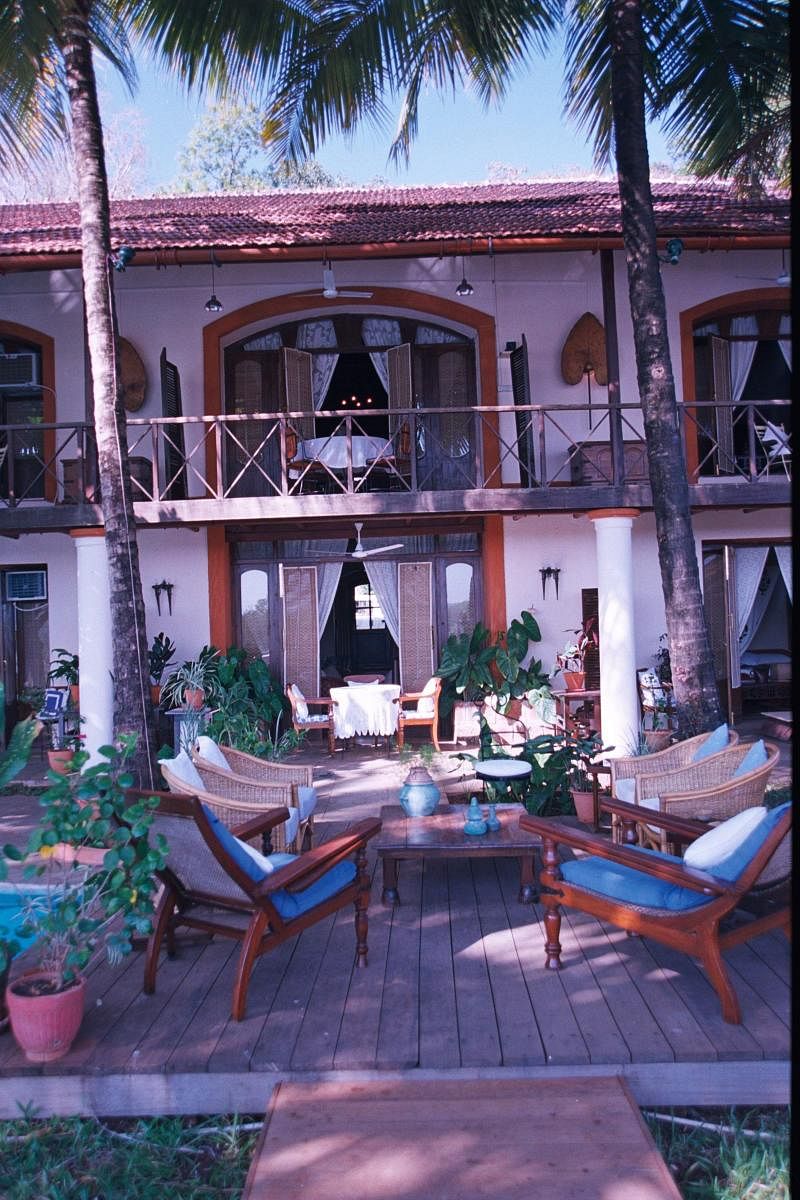

Once considered old-fashioned and abandoned, ancestral homes are making their way back. The trend of revamping such properties into gorgeous cafes, boutique hotels, and restaurants is now widely accepted. Architects tell us how to turn a derelict home into a luxury dining space.
Add and subtract
Understanding each structure, its limitations, and assessing the strength and size of the structural components is the first step. New columns are aligned with ones on the old floors so the load gets distributed properly, says Koushik Ramesh, principal architect of Maya Restaurant, a renovated home in Jayanagar, Bengaluru.
A decking floor was added with a courtyard to add more dining area and make the Sri Lankan vernacular look authentic, he adds. Koushik’s firm, Maze Concept Design Studio, is also working on Sante Spa, an upcoming restaurant that was also originally a bungalow in Jayanagar.
Dean D’Cruz, principal architect of Mozaic, Goa, says what’s to be retained in the structure is decided based on its architectural value. Boutique hotel Casa Britona, originally a 300-year-old Portuguese Goan home, and Sangolda Shop, a microbrewery, are among Mozaic’s renovated designs. “Working with an old structure requires a lot more craft than building a new one,” he points out.
Since the function of a restaurant is different from that of a home, zoning of spaces is essential, says Koushik’s colleague, Priyanka M C. “Restaurants need larger dining spaces, accessibility for waiters, and much bigger kitchens. So we must break a few walls,” says the architect. It is important to eliminate monotony while exploring such concepts — you could combine two rooms by tearing down the walls or eliminate doors and widen the opening to create private dining.
Watch the facade
When an old home has to look like an eatery, the facade needs a complete makeover. Whether it’s using doodles, textures or colours, restyling the façade with the right design approach is key.
How can one do this while keeping the identity of the home intact? Priyanka’s advice is to open up spaces to create more connectivity with the pedestrians on the road. Some diners can be seated near the facade. “The visual connection with pedestrians is sure to attract more customers,” she says. The facade can also have decorative lights, balconies can be turned into dining spaces, and railings and grills can be doused in vibrant colours. These ideas also protect the homely vibe, she adds.
The Courtyard Bengaluru is also an ancestral home-turned-café. Nischal Abhaykumar, founder of M9 Design Studio, says they retained the architectural features of the old home at the back and added a temporary prefabricated structure on the front. “The only design intervention made on the façade was to convert it into an old Bengaluru charm with a shade of red colour. The interior was refurbished with classic wooden furniture to dial up the nostalgia quotient,” he adds.
Play with lights
While turning a residential space into a cafe or restaurant, all residential switchboards are scrapped off and the controls come to one place that is accessible only to the manager. Luxury dining spaces are meant to be slow-moving spaces and lighting plays a huge role in this.
Maya Restaurant Bengaluru features cane lighting. Sustainable materials like cane are designers’ go-to because they age beautifully. Cane lights are in now. Metal, glass, and porcelain lights are other options that add great ambience. Pendant lights can be used on balconies to create a beautiful façade. We also added arches and light fixtures in the false ceiling, says Priyanka. Automation comes in handy.
She explains, “We need dimmable lights that are looped together. One tap should switch on all the lights of the café or restaurant.” Kitchens will have brighter lights. The lighting choices would vary based on function and aesthetics. Different styles of lighting are used in contemporary,
vernacular, and classical designs.
Backyard job
Backyards can be refurbished and decorated to serve as an open space for small parties. “If you want to use the space throughout the day and during all seasons, you can employ a metal pergola, and add glass to it. The space can also be used for an exhibit,” says Priyanka.
Beat the heat
Adding houseplants like Schefflera, tropical hibiscus, or peace lilies that blend into the design will bring more zest to the rooms while keeping them cosy. In eateries, you need a separate air-conditioning system for the kitchen with air balancing (an upgradation done to regular heating, ventilation, and air conditioning systems) to prevent kitchen air from spilling into the dining space. In contemporary design, the AC can have an exposed vent. “We can add colour to it and include it in the design,” notes Koushik. The internal plasters can be redone with clay and lime, and the walls can be painted in refreshing earthy hues like in bungalow-turned-café Green Theory on Convent Road, Bengaluru.
This is another way to regulate humidity and temperature, says architect Shruthi Ramakrishna of Made in Earth Collective. Each structure poses a different set of challenges. “Understanding the intent of the original design guides us to visualise how the space can come alive again,” she adds.
What makes these cafes special?
The continuity in architecture
Nostalgia and childhood memories associated with old homes attract people
Adaptive reuse is cost-effective and sustainable
Design challenges
Redesigning a structure, which is about 25 years old, needs a hands-on approach
Waterproofing can be challenging
Building on a load-bearing structure requires expertise
Limited craftsmanship
Wallet factor
Depending on the age of the building and its design, the renovation will cost about Rs 20,000 to Rs 30,000 per sq m.